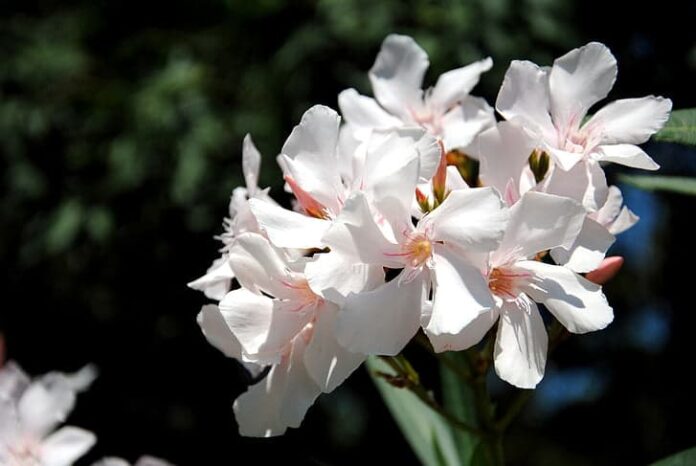Poisonous flowers exist, and many of them look too beautiful and tempting to avoid at first sight. This is why we are here to introduce you to some of the most dangerous flowers today. In case you come across one in the wild or plan to grow some in the garden, you know the reasons to think twice. This is also to keep kids and pets away from them as well. There are 20 poisonous flowers below, so let’s find out with us.
1Angel’s Trumpet
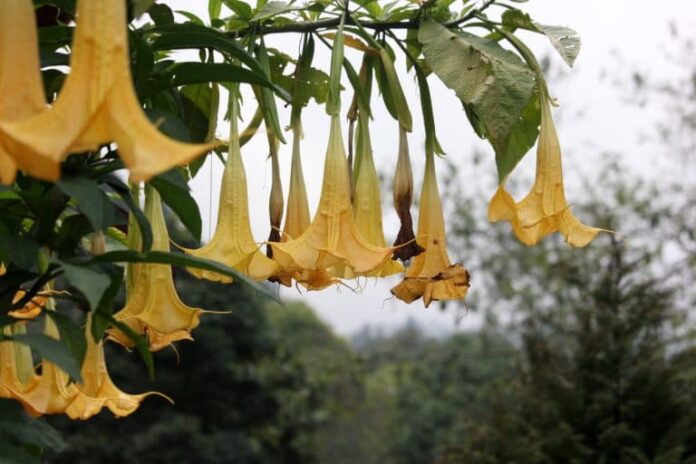
Poisonous Part: Flower, Leaves, Seeds
Has the name of an angel but with the power to send you to the devil, this is among the poisonous flowers. It is just a small flowering tree that shows off its fragrance and full bloom in autumn and summer. The colors of the flowers are often pink, white, and yellow, and their appearance resembles a trumpet. Despite its beauty, angel’s trumpet is highly toxic because its parts carry alkaloids atropine, hyoscyamine, and scopolamine. In fact, the inhalation of these poisonous flowers can also be harmful. The symptoms are dilated pupils, dry mouth, fever, hallucinations, hypertension, muscle weakening, and paralysis. The only good thing is it is poisoning only after the consumption of a large amount. However, a flower that can cause hallucinations like that is not what we should go near.
2Autumn Crocus
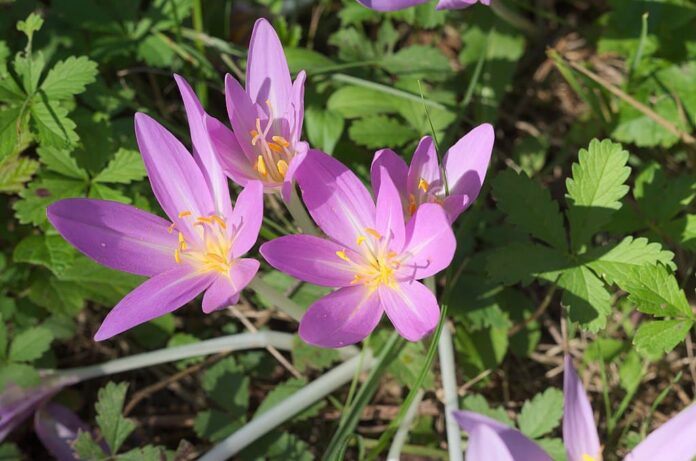
Poisonous Part: Entire Plant
Even the name of this poisonous flower does not sound any dangerous, how can a beautiful flower be deadly? That is because every part of this flower contains a high amount of colchicine which is a toxic chemical. Its other name is meadow saffron, and there are around 60 species of them in various parts of the world. It is actually a common garden plant so not many people think it is poisonous. Ingestion of these poisonous flowers can cause impacts on the cardiovascular system and nervous systems which lead to congenital defects, gastrointestinal, and musculoskeletal. In severe cases, it results in kidney failure, liver failure, multiorgan failure, pancytopenia, seizures, and death.
3Azalea
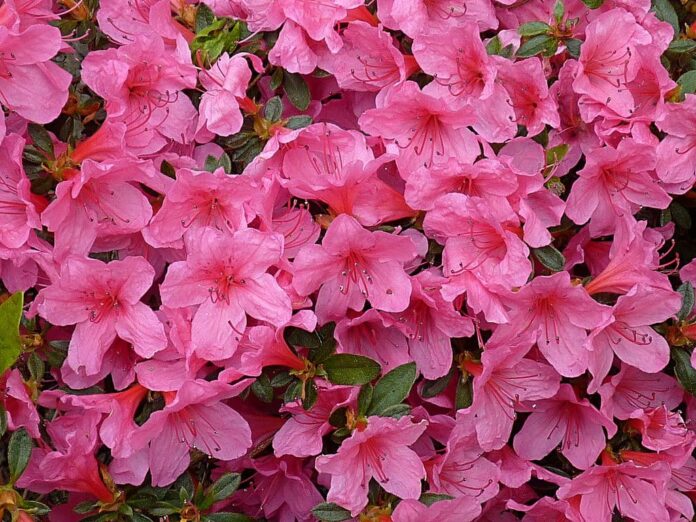
Poisonous Part: Entire Plant
Perfect for Instagram photos but deadly upon consumption, this is the flower to have in mind. We all know someone who would chew a leaf or stem from flowers, and highly toxic flowers like this are bad news. The ingestion of these poisonous flowers can cause abdominal pain, breathing difficulty, coma, paralysis, and even death. Azalea flowers are beautiful decorations for fences, but make sure to plant them where no one would eat them.
4Baby’s Breath
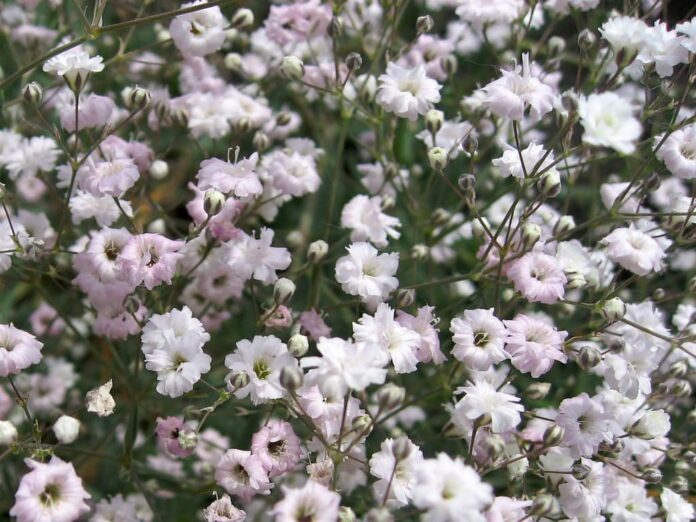
Poisonous Part: Entire Plant
The combination of small size and white color makes baby’s breath a perfect filler in bouquets. Compared to most poisonous flowers on the list, this one is not too highly toxic. However, it can still cause allergic reactions since all parts of the flower contains saponin gyposenin. This substance can cause breathing difficulties, dermatitis, nose irritation, and sinus irritation. At least it still can adorn bouquets since it is only harmful upon consumption.
5Bleeding Heart
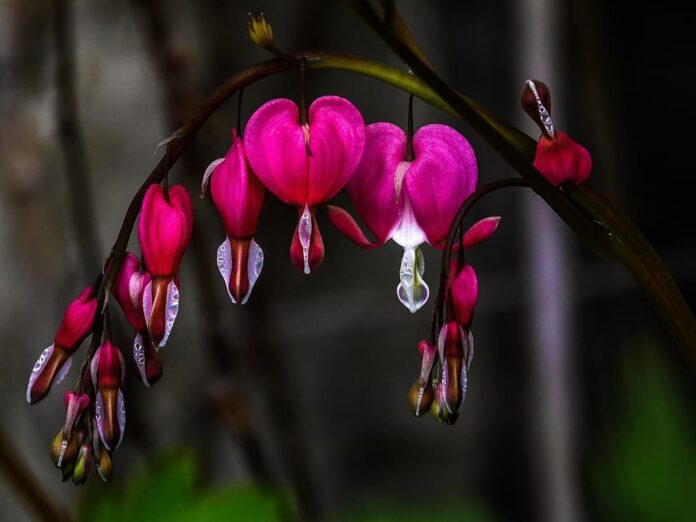
Poisonous Part: Entire Plant
Got its name from the resemblance with the heart, these flowers are one of a dangerous kind. This poisonous flower is really to recognize, and its color is usually pink with various shades. It is actually a very popular flower in the garden and most of those who plant them know its danger. All parts of bleeding heart contain isoquinoline alkaloids that can induce harm to people and pets. After consumption, it can cause convulsions, diarrhea, labored breathing, tremors, and vomiting. Even constant contact with the sap can lead to skin irritation, so it is better to admire their beauty from a distance.
6Bloodroot
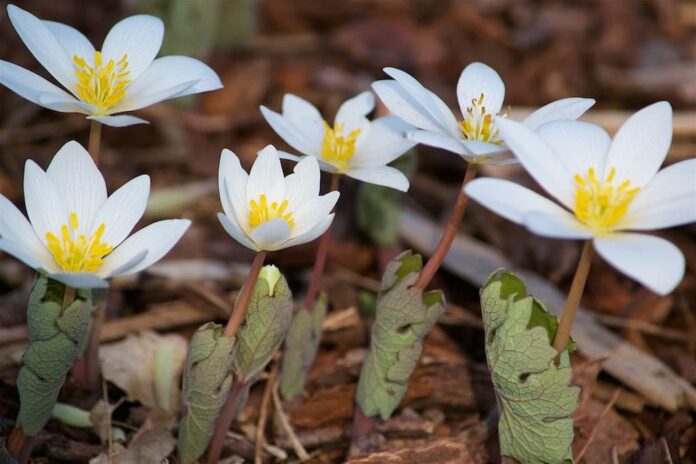
Poisonous Part: Flowers, Leaves, Oils, Stems
Here we have another graceful flower that is actually poisonous that you should know. Bloodroot receives its name from the red latex that its rhizomes produce. This red latex contains multiple alkaloids that are poisonous when ingested in large amounts. The symptoms include diarrhea, dilated pupils, dizziness, faintness, heart failure, nausea, and vomiting. These toxic properties are dangerous to both humans and animals, and eating them is a bad choice. Even a simple touch can cause skin irritation which is why bloodroot should be avoided. The good thing about these flowers is that they contain medicinal properties for dental problems and more.
7Calla Lily
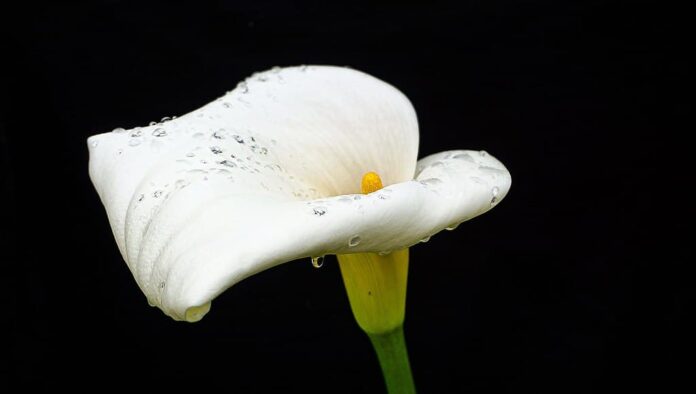
Poisonous Part: Entire Plant
At a glance, calla lily is just one graceful flower whose beauty is admirable. These flowers make great cut flowers or houseplants due to their variety of shades such as green, pink, purple, and more. The thing to remember about them is that they are highly toxic, and they can be fatal. All parts of the flower contain calcium oxalate crystals which are very dangerous. By a large amount of ingestion, it can cause burning sensations, diarrhea, stomach pain, and swelling of the lips, throat, and tongue.
8Daffodil
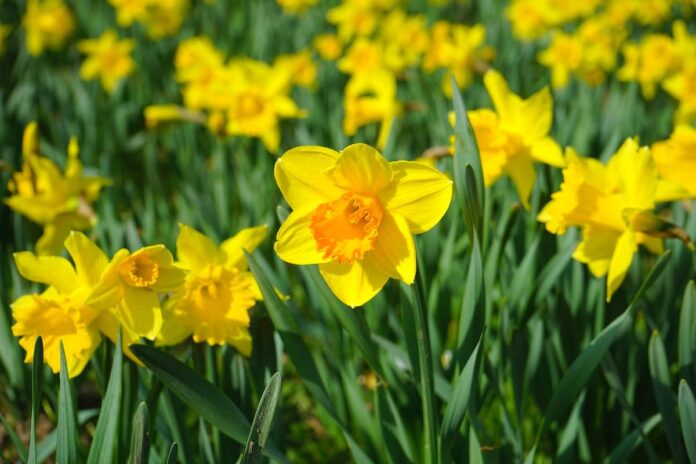
Poisonous Part: Bulb
While looking so fresh and friendly, daffodils are deadly to both humans and pets. Their bulbs contain harmful alkaloids and oxalates that can cause convulsions, diarrhea, drowsiness, oral irritation, and severe vomiting. Eye and skin contact with the sap may also result in irritations in the areas. You can plant them if you don’t have curious children and dogs in the house.
9Devil’s Helmet
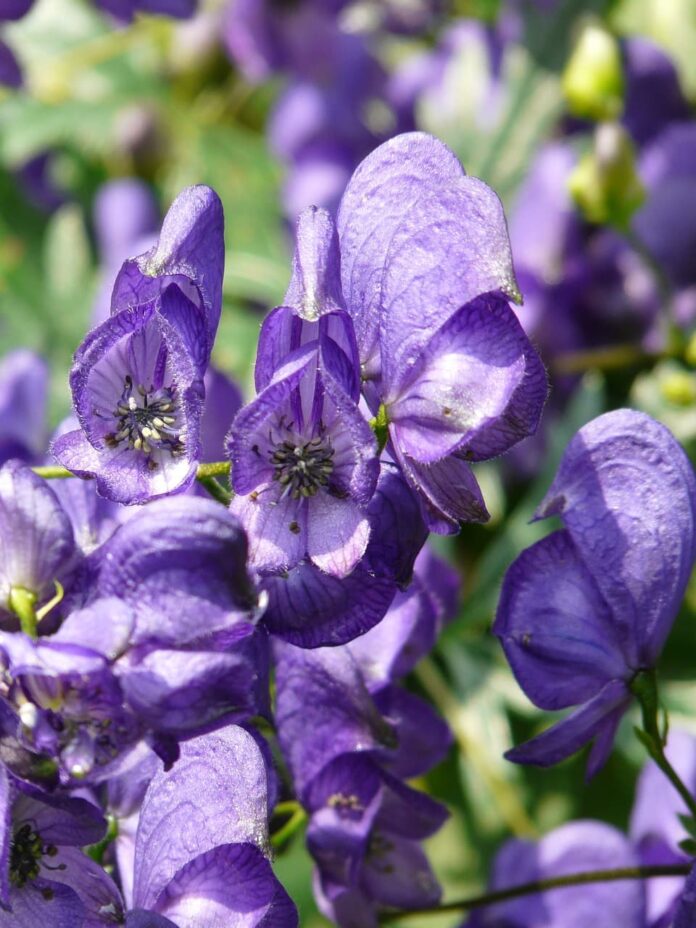
Poisonous Part: Entire Plant
This deadly flower goes by many other names such as monkshood, queen of poison, wolf’s bane, and more. The entire plant is poisonous, but the highest concentrations of potent toxins are in roots and tubers. You don’t have to consume it to feel the deadly effects, a mere touch with bare hands is all it needs. As the most poisonous flower known to men, it can cause death if it touches any broken skin or open wounds. The devil’s helmet contains large quantities of pseudaconitine which is a deadly poison. A simple touch can cause asphyxia, cardiovascular, convulsions, hypotension, irregular heartbeat, and numbness. Ingestion of this flower can lead to almost instant death although it is rare due to its unpleasant flavor.
10English Broom
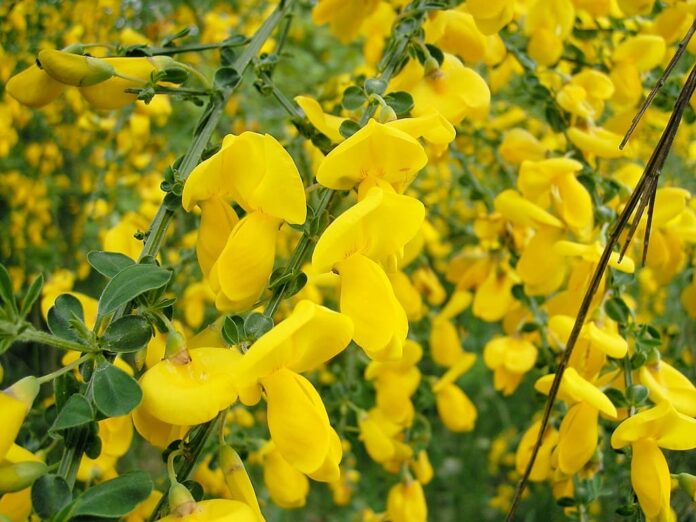
Poisonous Part: Seeds
Native to Central and Western Europe, the English broom or broom is one of the poisonous flowers to watch out for. In spring and summer, these flowers are dark orange-red or golden yellow in color. The flowers contain toxic chemicals that can affect the heartbeat by depressing the heart and nervous system. Apart from being poisonous, these flowers are also shelters for pests animals such as horses and wild pigs. If used right, the flowers are actually helpful as a cardiac and cathartic stimulant in medicinal contexts. The flowers are useful to some extent, but it is not ideal to have in the garden.
11Foxglove
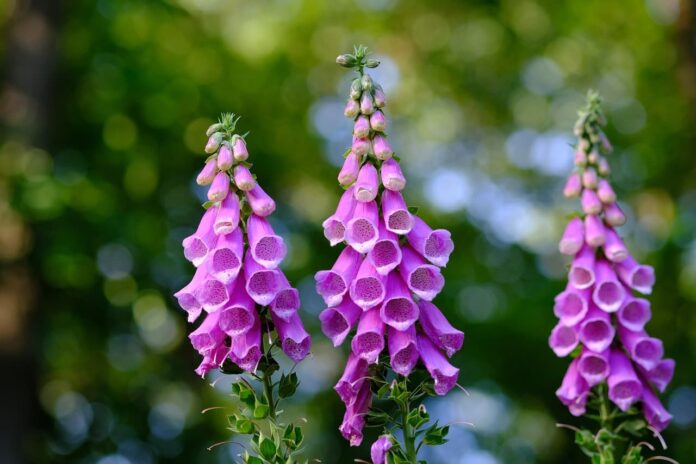
Poisonous Part: Flowers, Leaves, Seeds
You cannot trust beauty when it comes to poisonous flowers, and this is a great example of that. The beautiful colors with perfect alignment are just a disguise to sugarcoat the fact that they are deadly. Upon ingestion of the poisonous parts, patients will experience abdominal discomfort, diarrhea, heart problems, kidney problems, nausea, and vomiting. Even direct skin contact may result in skin irritation, let alone consuming it and facing risks of heart failure. It makes a gorgeous compliment to the garden, but avoid them if you have curious kids and pets.
12Lantana
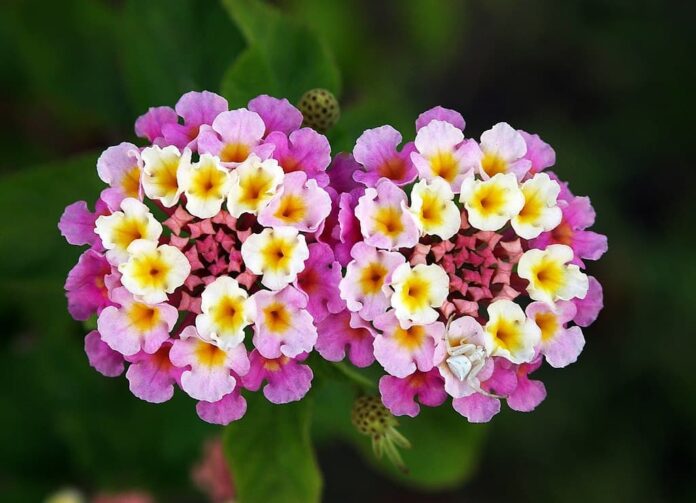
Poisonous Part: Entire Plant
In case you wonder if there is any flower that can cause depression, lantana is the answer. All parts of this flower contain triterpenoids, and these substances can cause depression, diarrhea, possible liver failure, and vomiting. Despite the poison, these flowers are colorful with blooms of cream, orange, pink, red, or even multi-colored. On top of that, its fragrance attracts bees and butterflies while being poisonous to humans and livestock. It can cause death resulting from kidney failure and other serious symptoms so it is better to stay away from them.
13Larkspur
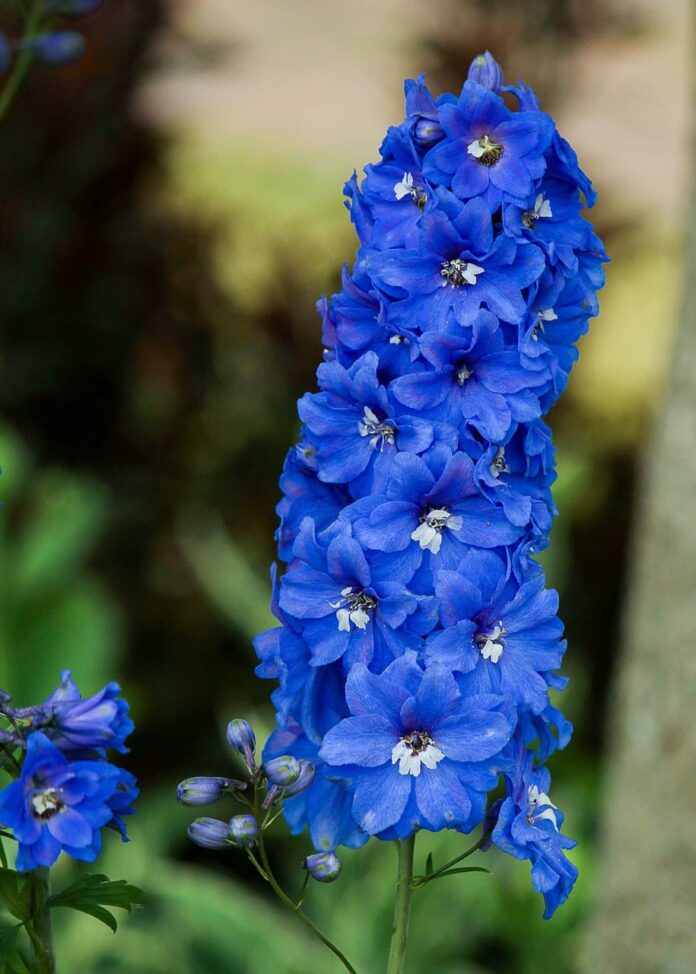
Poisonous Part: Entire Plant
More common in animals and cattle, larkspur often causes poisoning upon consumption of any parts of this flower. Things get even more serious if the animals eat the seeds or younger plants because they contain the highest toxic concentrations. After consumption, the toxin can cause abdominal pain, colic, constipation, diarrhea, drooling, nausea, and vomiting. Even more serious, it can lead to labored breathing, sudden falling, weakness, and more. Poisoning in humans from this flower is very rare because they have no fragrance that attracts humans to eat them.
14Lily Of The Valley
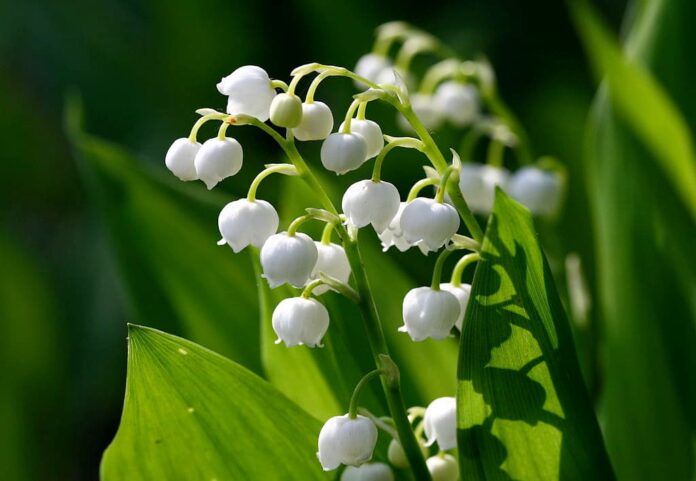
Poisonous Part: Entire Plant
Looking so graceful and pretty, this deadly flower is found in Asia and Europe. The flower has 6 white tepals that form a bell shape, and it has a sweet fragrance. It is highly toxic to domestic animals and humans upon consumption, and it can also cause severe dermatitis if touched. In some serious cases, these flowers can even cause death if left untreated. Despite the toxicity, this flower makes its way to produce fragrance by some famous perfumers out there. Those include Christian Dior, Edmond Roudnitska, Henri Robert, Olivia Giacobetti, and more. People also use them for weddings, and the price is quite high due to their beauty and fame.
15Morning Glory
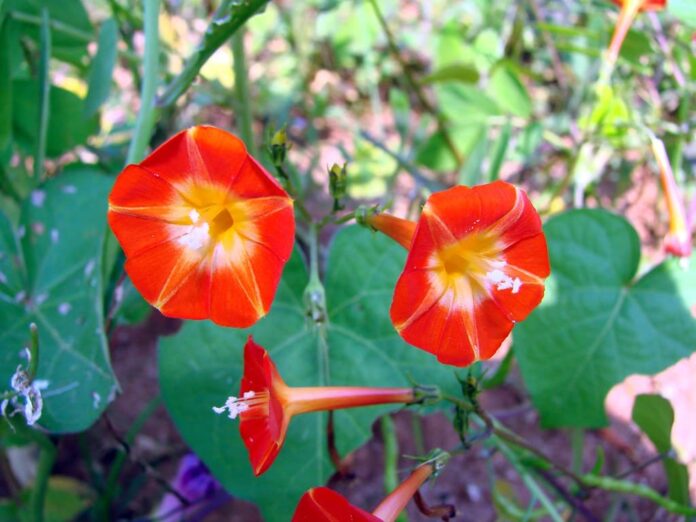
Poisonous Part: Seeds
This is one of the common flowers that most people come across. Its color range from blue and magenta to purple and white, and it has heart-shaped leaves with trumpet-shaped flowers. Most kids and some adults usually pluck it to use as adorn on the hair or for photos. Sometimes pets like dogs tend to sniff and eat them, and these flowers can be very harmful. The seeds of this flower contain toxic lysergic alkaloids, and a large amount of consumption can cause diarrhea, hallucinations, and liver failure.
16Mountain Laurel
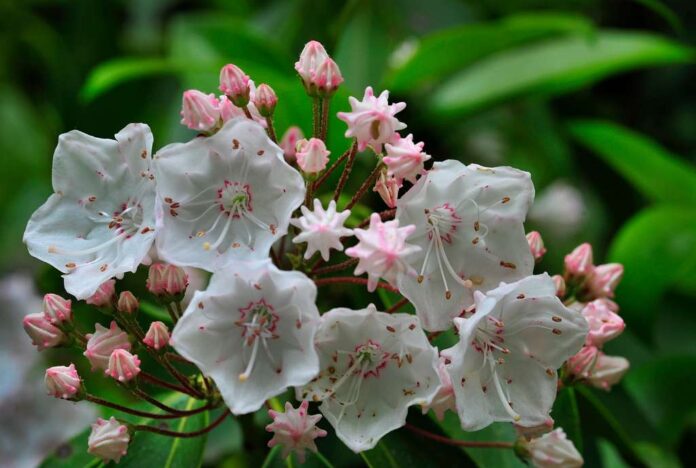
Poisonous Part: Entire Plant
The beauty of this flower is very attractive, especially their pink and white colors. It is native to the eastern United States, and people usually use them for decorative purposes. Those who use are also aware of the fact that these flowers contain toxic diterpene compounds. Animals like cattle, goats, horses, and sheep often eat these flowers, and the toxin causes a lot of discomforts. The symptoms are usually abdominal pain, excessive salivation, muscle tremors, rapid heart and respiration rate, seizures, and vomiting.
17Oleander
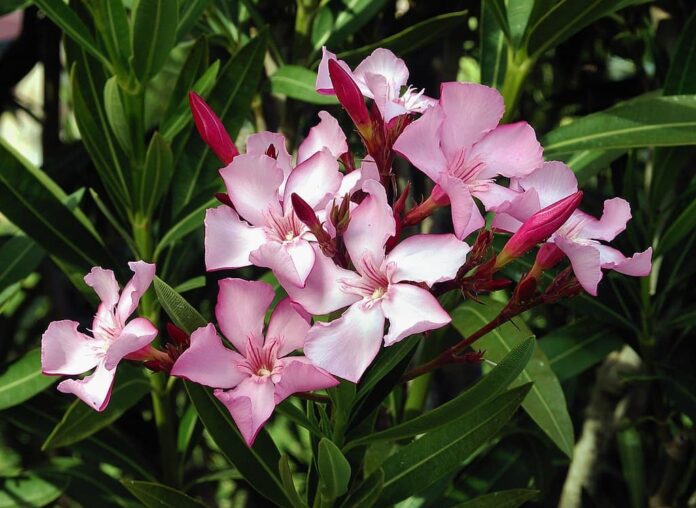
Poisonous Part: Entire Plant
Oleanders are pretty flowers with different colors such as pink, red, white, and yellow, and some of them are poisonous. The pink and yellow oleanders contain several types of cardiac glycosides that are harmful to both people and animals. One leaf is poisonous enough to harm a child although fatalities are rare. The common symptoms in humans are abdominal pain, bloody stools, diarrhea, dizziness, drowsiness, mouth irritation, nausea, and shortness of breath. As for animals such as cattle, horses, and sheep, the symptoms are mouth irritation, pupil dilation, and rapid breathing before death.
18Water Hemlock
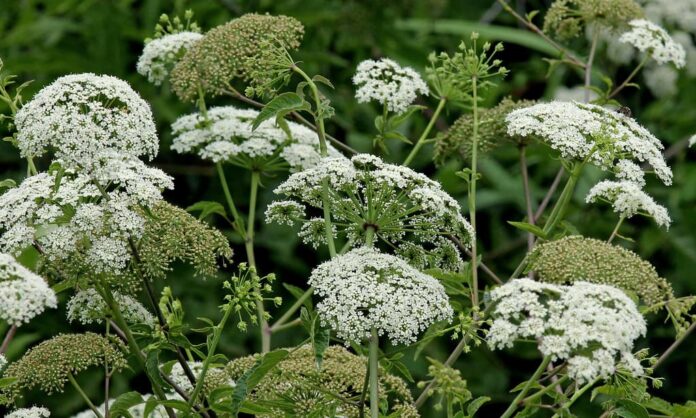
Poisonous Part: Leaves, Stems
Small flowers look gorgeous in the gardens, and so is this one right here. Sometimes people can see them appearing in the garden as weeds, and people tend to keep them because they are pretty. However, you should remove these flowers if you have curious pets. Their leaves and stems smell like carrots, and they are highly poisonous due to the presence of cicutoxin. It can induce convulsions, gastrointestinal discomfort, hypersalivation, and hypoxia before it attacks the nervous system which results in, seizures, and death.
19White Snakeroot
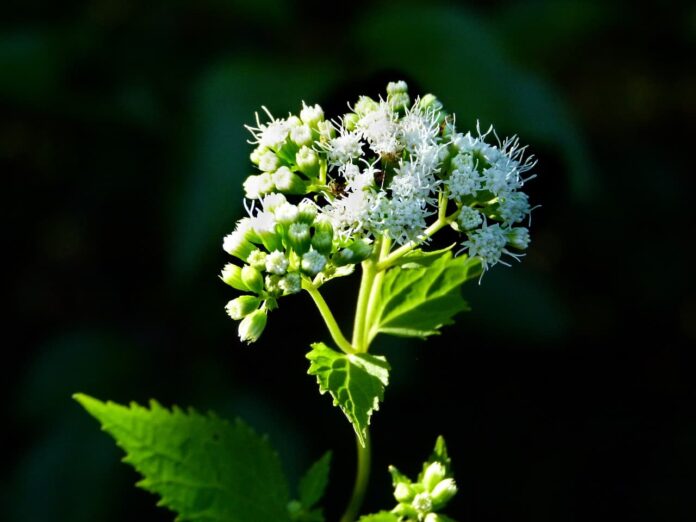
Poisonous Part: Leaves, Stems
A group of numerous small flower heads together makes white snakeroot looks so beautifully welcoming. Little did you know and the animals know how deadly it can get. Both the leaves and the stems of these flowers contain tramadol which is an extremely poisonous substance. Grazing animals would consume them, and a large amount can cause a condition known as “trembles” that may cause death.
Even worse, if we drink milk from lactating animals that consume the flowers, we may experience “milk sickness”. This condition was common in colonial times, and it was believed to be the cause of Abraham Lincoln’s mother’s death. In modern days, commercial production doesn’t really let cows graze the field so the milk is way safer. In humans, the consumption can cause abdominal discomfort, appetite loss, nausea, weakness, and more.
20Wisteria
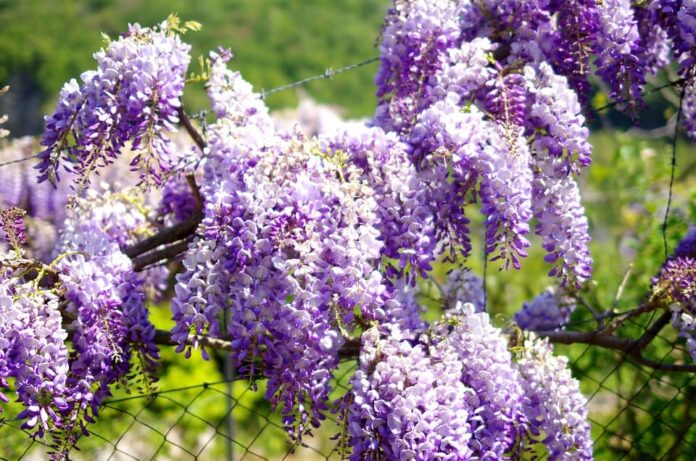
Poisonous Part: Pods, Seeds
As climbing vines, the beings that these flowers can be harmful to our animals, especially cats, dogs, and horses. These vines are very beautiful with their clusters of hanging flowers of blue and purple. At the same time, its fragrance is also pleasant. However, all parts of the flower especially pods and seeds contain harmful chemicals. They can cause burning sensations in the mouth, diarrhea, stomach pain, and vomiting. The symptoms can last up to 2 days once they develop, so make sure to seek medical treatment immediately.
Related Post: Poisonous Plants To Avoid

